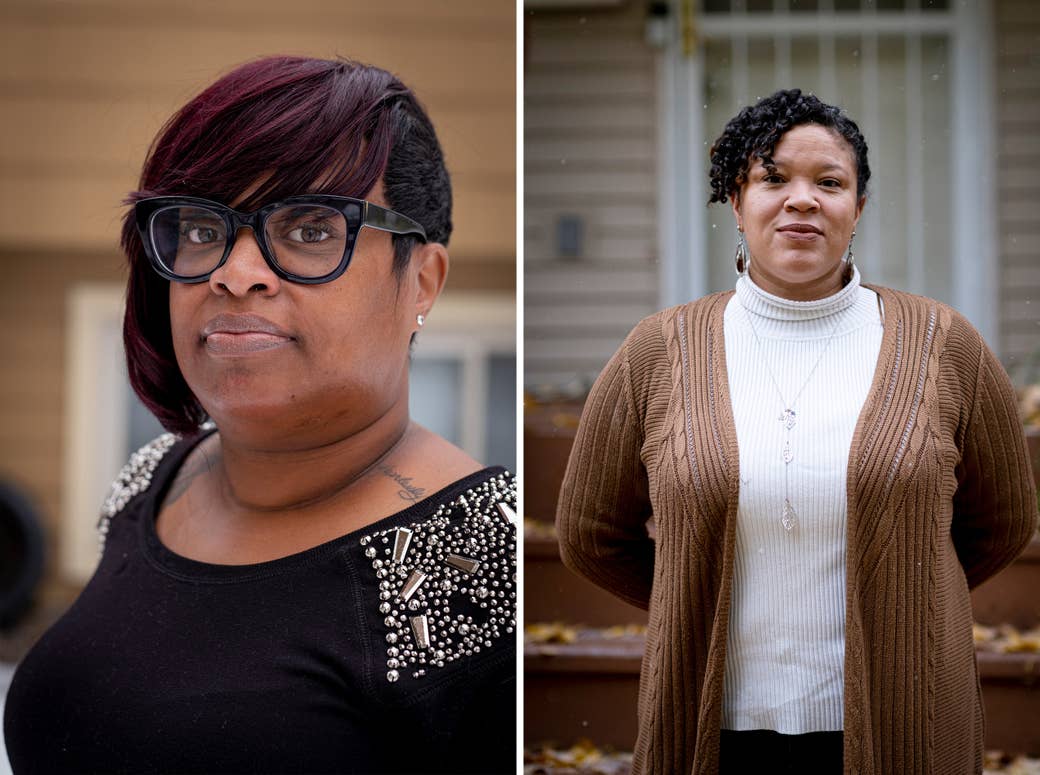
Portia Jackson wants Black people to buy houses.
Jackson, a 40-year-old homeownership adviser, lives in North Minneapolis in a split-level house that she talks about as if it were her child. Since purchasing it in 2015, she’s become an evangelist for homebuying — and she wants Black people to buy for a whole host of reasons, only the most obvious of which is to have a place of their own to call home. For her it’s about building up generational wealth, about giving families a sense of safety, and about securing Black children’s futures and letting them grow up to become the “doctors and lawyers” they dream of being.
It’s about having all the things that so many white people take for granted.
This is an election year where issues of race and racism are never too far beneath the surface. It is the year of George Floyd, of Breonna Taylor, of Black Lives Matter, and up for reelection is a president who race-baits at every opportunity. President Donald J. Trump, a real estate scion whose family has a history of denying homes to Black people, frequently turns to housing policy to connect with white middle-class voters.
Trump has been playing on fears that progressives want to move Black people into white suburbs — a fear that stretches back through history to the emancipation of the slaves. It’s a fear that has constructed white suburbs as fortresses, built to keep Black people from accessing them, and resource-deprived Black neighborhoods that have become ripe for exploitation. In the aftermath of World War II, the federal government created white suburbs and by extension the white middle-class through housing policies that underwrote the development of all-white suburbs. During this election, the president has voiced the fear at the heart of half a century of housing policy: that the only way to secure wealth and comfort is to have exclusive, affluent white neighborhoods.
Trump’s pleas to white suburban mothers have only increased in recent weeks, placing these women — who were crucial to his victory in 2016 but who now seem to be turning away from him, in part because of his racism — at the center of this election.
But amid all this, there is a question that is often ignored: What do Black women want?
BuzzFeed News spoke to three women in Minneapolis who have dedicated their careers to the housing needs of Black people. They too said they wanted to live in safe neighborhoods, with good schools and a solid sense of community — they just don’t believe they should have to move to the suburbs to get it.
Indeed, while national housing debates have focused on how white people feel about Black people moving into the suburbs, these women want policymakers to help them stay in their neighborhoods — and to do what’s right for those communities. The real problem, as they see it, is not a Black exodus to the suburbs; it’s the gentrification of Black neighborhoods in the city. They have watched North Minneapolis, the historically Black section of the city where they live, transform as white people from the suburbs buy up cheap properties.
Jackson is proud to live in North Minneapolis and doesn’t want to go anywhere. She sees it as a great place to raise her family.
“Even though the system — the financial system, the government system — has had their knee on our necks, figuratively and literally,” she added. “I still wouldn’t move and go anywhere.”
And as attractive as the suburbs might appear to many, she worries what would happen to her five children, particularly her two young boys, if they moved to a neighborhood where they would instantly stick out. Would they be stopped on the street by police? Would their neighbors welcome them? What would happen to her kids at predominantly white schools?
“I know what it is to be a Black woman in America and in Minneapolis, I have no idea what it’s like to be ... a Black boy in ... the suburbs.”
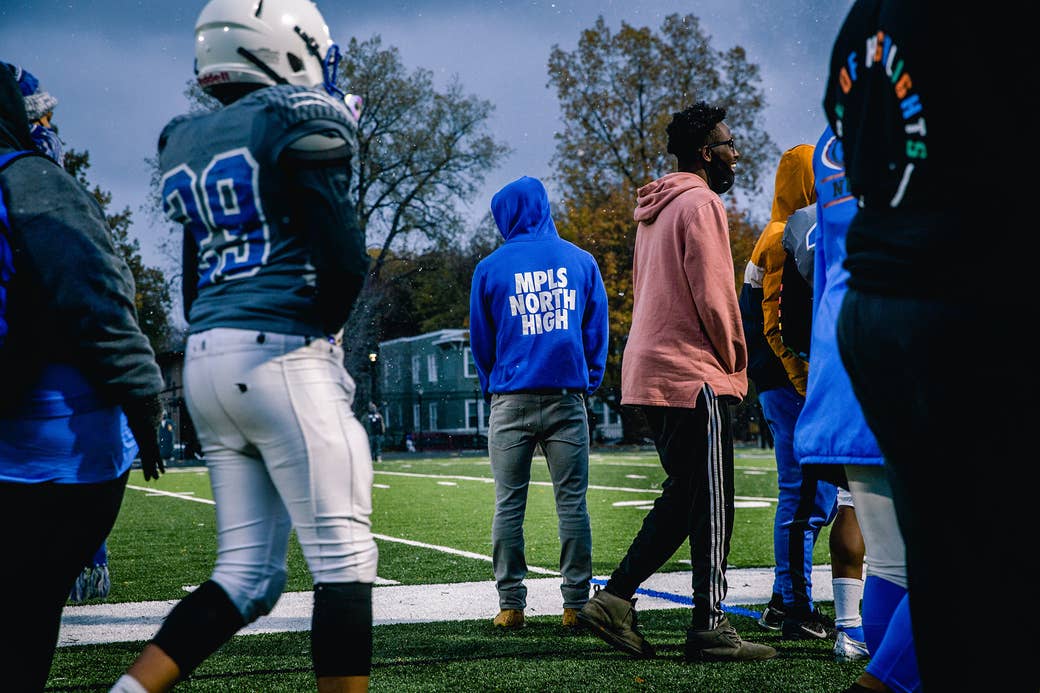
Minneapolis has a reputation as one of America’s most progressive cities. Indeed, it has produced some of the country’s most forward-thinking politicians including former vice president Walter Mondale, who coauthored the landmark Fair Housing Act of 1968. The bill, which was the last piece of legislation to come out of the civil rights movement, prohibited discrimination in the sale, rental, and financing of housing based on race, color, national origin, religion, sex, familial status, and disability. It was instantly one of the most unpopular with white voters, north and south.
It also sought to reverse the housing segregation that past laws had created by mandating that every level of government work to “affirmatively further fair housing,” which meant taking steps to undo the decades of racist policies that had led to the white suburb and the black inner city. Unlike previous pieces of civil rights legislation, it demanded action in the North as well as the South. But even in proudly progressive places like Twin Cities, most white people were unwilling to swing open the doors of their communities to Black families. Despite its history of progressive white politicians, the Twin Cities frequently ranks as one of the worst places to be Black, and the economic gulf between Black and white families in the area is larger than almost anywhere else in the country.
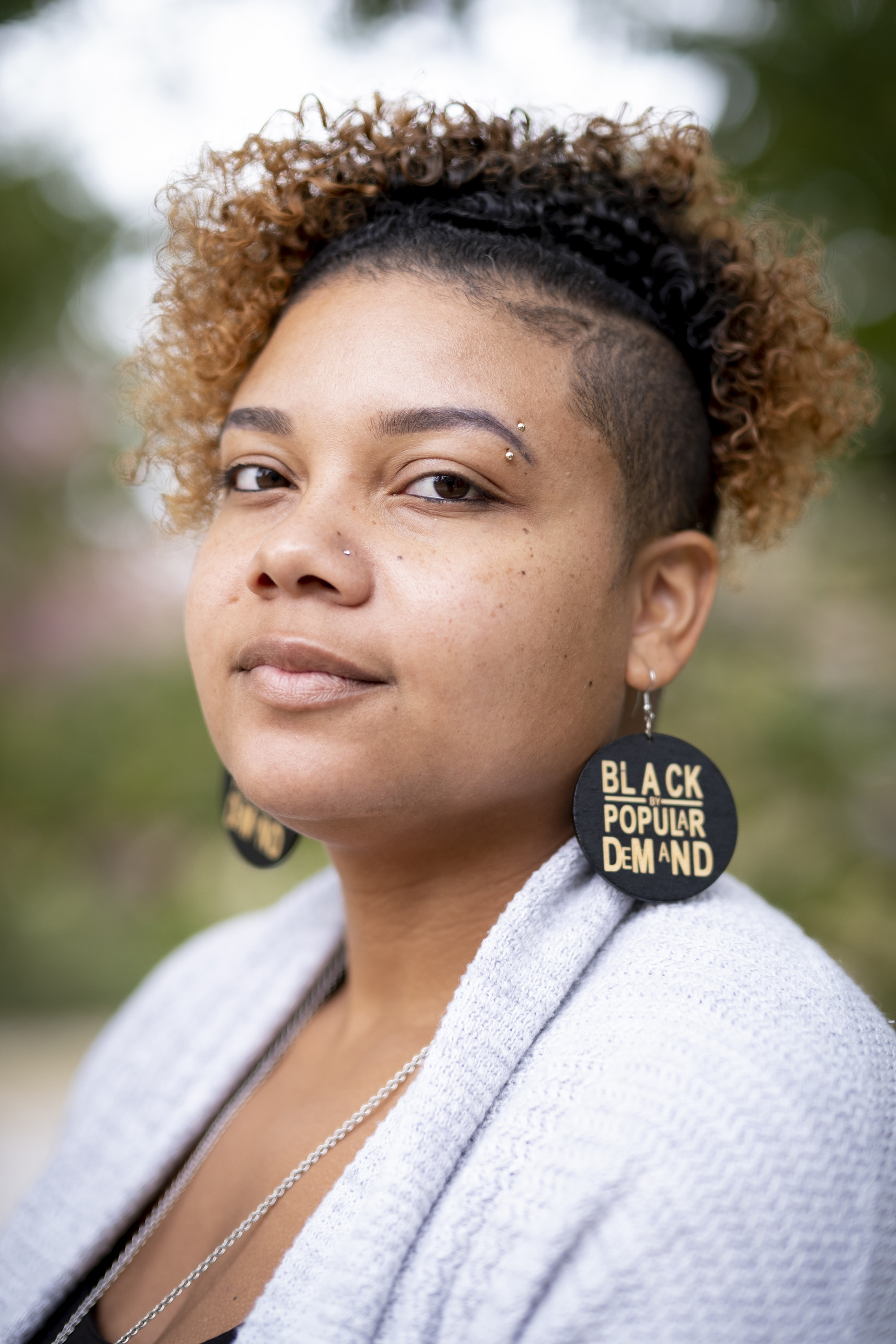
Like Jackson, Brittany Lewis sees the history and politics of Minneapolis through the lens of who gets to own a home and where. Lewis, a 33-year-old housing policy researcher, has spent her career studying how race has been at the heart of housing policy in her hometown. For her, there is no way of confronting the current racial reckoning without understanding that, even in this progressive bastion, the desire to confine Black people to the poorest neighborhoods runs deep.
Lewis was born and raised in Minneapolis, and now owns a home on the north side. And like Jackson, she doesn’t dream of moving to the white suburbs. The fears that Trump stokes make no sense to her. What she loves about her neighborhood is that it is “a resilient community that has grown a lot of amazing leaders … that we don’t often talk about because we are always talked about from a deficit-based place, not an asset-based place.”
While many researchers stick to policy-speak, you can hear the fire in Lewis’s voice as she unfurls the history of North Minneapolis. The first public housing project in the state of Minnesota was built there in 1934, and since then North Minneapolis has been the place where Black people were “strategically placed,” she explained.
“So I talk a lot about North Minneapolis as a place that was strategically manufactured in every way and public housing is a big part of that narrative, where do you put your undesirable population?”
The federal government built the white middle class. In the years after World War II, the US government made buying a house attainable for most white families for the first time in American history. White suburbia was financed with low-cost mortgages to homebuyers that required little to no down payment and generous subsidies to housebuilders who promised to construct all-white communities. In 1940, fewer than half of white families owned their homes. By 1970, nearly two-thirds did. And with homeownership came wealth and security for millions of white families.
There was a clear “framework for preferential treatment,” Lewis explained.
The Federal Housing Administration would only approve plans for new subdivisions if they included a covenant in their deeds that prohibited homeowners from selling to nonwhite buyers. Getting federal approval was critical for the financing of these projects. If a community had FHA approval, it guaranteed that prospective buyers would get access to subsidized low-cost loans. That ensured that the buyers had a way to pay for the new homes and the developers had customers to purchase the houses.
With the help of the government’s largesse, builders were able to keep the price of new homes low — and give many white families that important first step on the property ladder. In the late 1940s, the average home in St. Louis Park, a suburban community less two miles south of North Minneapolis, sold for $7,000. Today, the median sales price stands at over $300,000. Even after taking inflation into account, the average home there has more than tripled in value — allowing white families to build critical intergenerational wealth.

In contrast, by as early as the 1930s, Minnesota officials were referring to the north side as a “negro slum,” even though only a few hundred Black people lived in the area immediately north and west of downtown.
“That first unit of public housing in 1934 became over a thousand units by the ‘60s,” Lewis said. “That was a strategic decision. The city council of Minneapolis had the option to scatter that housing. But some representatives from outlying areas … came in and said ‘not in my neighborhood,’ and so they concentrated poverty because they didn’t want the political flack of trying to disperse people.”
By the 1960s, the neighborhood had gone from a blue-collar, but well-maintained, neighborhood to a desperately poor one as white families took advantage of government programs and moved to the suburbs, and Black families were stymied by the practice of redlining. Not only did government agencies block Black families from moving to the suburbs, officials at the local, state, and federal levels actively targeted the neighborhoods where they were already living. At the same time that the FHA was handing out money to suburban homebuyers, the agency was also deciding who wasn’t worthy of credit. The FHA went about classifying neighborhoods in cities across the country into four buckets — hazardous, declining, desirable, and best. The presence of Black and Latino families alone was enough to get an area rated hazardous. Hazardous neighborhoods were shaded red on FHA maps, giving rise to the term “redlining.” In redlined areas, the government refused to underwrite loans, causing home values to plummet and neighborhoods to deteriorate.
Redlining gave birth to the American ghetto.
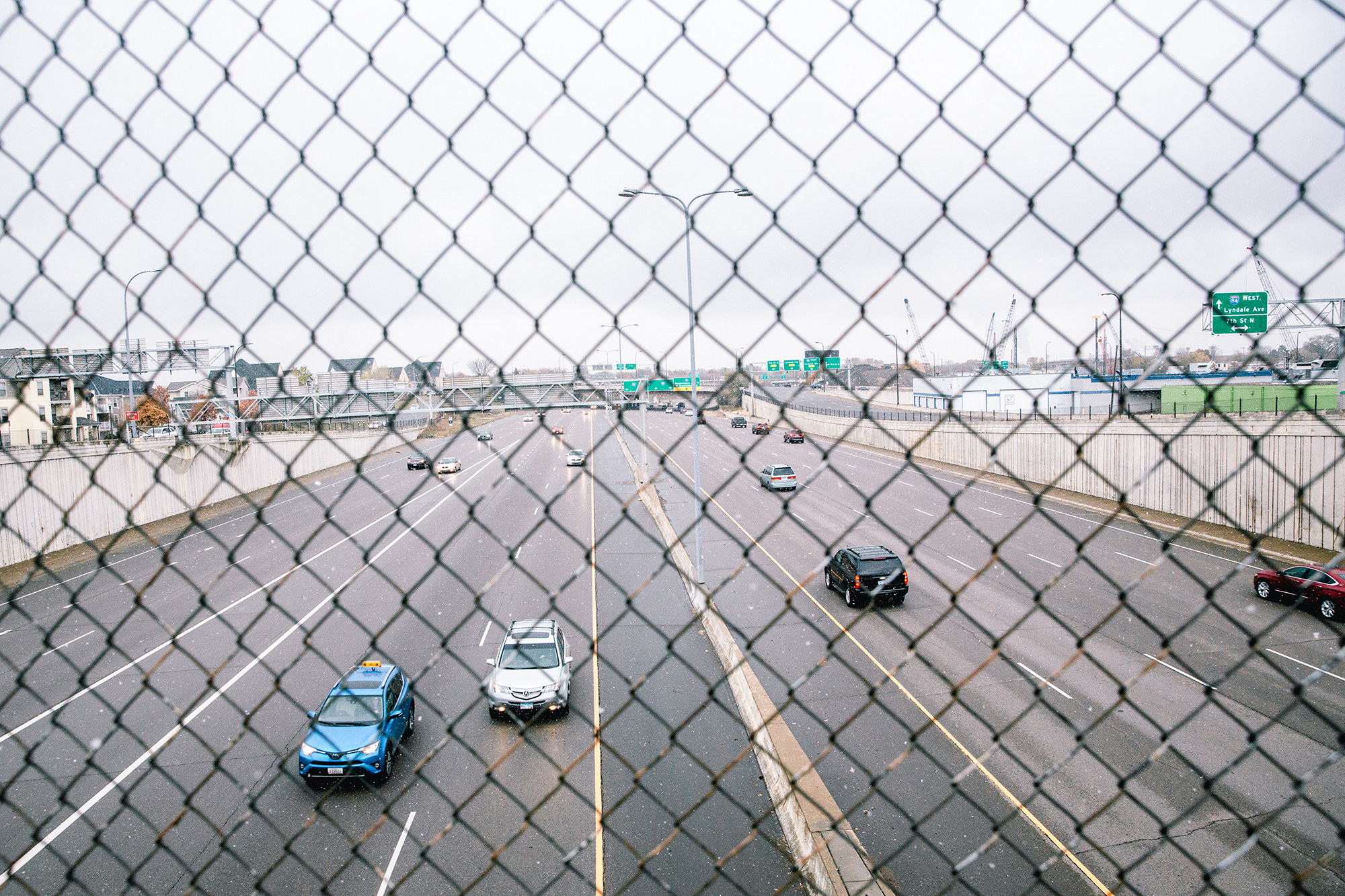
As in many of America’s new ghettos, by the late 1960s, Black residents in North Minneapolis had lost patience with local officials and the police. In both 1967 and 1968, Black people took to the streets in protest, fed up with being overpoliced and underemployed. The Minneapolis protests were among 160 uprisings that took place across the country during 1967 alone.
“There were two disturbances and it was connected to the same kind of local political economic issues that were happening in Detroit or Los Angeles,” said Lewis. “It was about a lack of jobs and the kind of discrimination they were experiencing from local shop owners, and wanting their local mayor and others to do something about it.”
While the details have changed somewhat, these are the same structural issues that Black Lives Matter activists are fighting to change now. Lewis points out that in the 1960s local and national leaders promised profound change, but delivered few tangible results. For Lewis, history has proven that Minnesota officials have done more talking about change than instituting actual change.
“We live in a very performative white progressive state, and what does it mean to be performative? It means we are more concerned about performances and what they illustrate about us versus what our actions say about us.”
While many in the Twin Cities metropolitan area might like to see themselves as progressive, it is also one of the whitest large urban areas in the country. In the 2010 Census, 4 out of 5 residents of the Minneapolis–St. Paul area identified as non-Hispanic white. That is significantly whiter than the country as a whole and other large metropolitan areas like New York. In recent decades, Minneapolis has become more diverse thanks to an influx of refugees from places like Somalia, but many of its suburbs remain virtually all white.
As part of her research, Lewis has interviewed Black families who have moved to the suburbs. For many it wasn’t the promised land they’d hoped for. They told her about the racism experienced by their children in predominantly white schools and the difficulty of building a community. “There’s this notion that now I’m connected to a white institution that has better programs, somehow my children were going to benefit, most of which they never did,” Lewis said she was told repeatedly.
For Lewis, the problem is in fact the other way around: “Right now, I’m working with the Minneapolis Housing Authority. They want to know why are mostly Black people not moving to opportunity neighborhoods. I think it’s a ridiculous question.” Her biggest concern is the gentrification of predominantly Black neighborhoods by white people who have no difficulty getting mortgages thanks in large part to the family wealth built on the back of postwar government housing programs.
“It’s not surprising that gentrification is happening, It was supposed to happen,” she said. Lewis did a two-year study of gentrification in Minneapolis, which showed that the most affordable place in the city for middle-class white families is in fact the north side. The irony of this is not lost on Lewis — for all Trump’s rhetoric, it is white gentrifiers who are on the move. “You’re seeing white people buy up historical properties on the north side, live in them, and restore them. A lot of them have done that and left.” After all, she said, that’s the purpose of the housing market: Buy cheap, renovate, see the house price rise, then sell and move on to something better: “That is the model.” What it doesn’t do is benefit the Black people who had no choice but to live there in the first place.

Growing up, Portia Jackson had, at times, lived in cars and homeless shelters. Jackson wasn’t born in Minneapolis but arrived in 1992 after her mother decided to get the family out of Chicago’s South Side, the epicenter of violence that would claim 940 lives in the city that year, still the worst on record. Jackson, 12 at the time, didn’t want to go, didn’t want to leave her friends and family. But when her mother’s finger landed on Minneapolis on the map, the decision had been made.
The family settled in a duplex in North Minneapolis. The neighborhood had long ago been written off by many white Minneapolitans as undesirable, but Jackson remembers it as vibrant and integrated. “It was a total culture shock because Chicago was very segregated,” Jackson remembered. “The neighborhood [in Chicago] we lived in was all Black. You went a couple blocks over and we had Latino neighborhoods as well, but no white people lived in my neighborhood at all. So it was very different moving from there to here to being around white people all the time. I wasn't ready for it. I didn’t know what to do.”
Jackson’s new neighbors and schoolmates were Black and white. But as the 1990s came to a close, she and her mother started to notice that the neighborhood was changing as, one after another, their white neighbors seemed to vanish. While many of Minneapolis’s suburbs have remained monolithically white, the north side has always been in flux — largely driven by when and if white people have felt comfortable living there.
Jackson’s job is to help Black homebuyers navigate a maze of programs ostensibly designed to make up for the historic injustices of redlining and segregation. For many who come from suburbs, it’s relatively easy to buy a home. You find a house within your price range, and you come up with a down payment.

For Jackson, buying the home she now lives in with her five children came with a lot of sacrifices. Before going into housing policy, Jackson, who has a master’s in health and human services administration, spent a decade working in county welfare and child protection departments in Hennepin and Ramsey counties, home to Minneapolis and St. Paul respectively.
As she worked her way up through the ranks of county government, Jackson started earning more money and eventually lost her Section 8 subsidy, a federal housing voucher provided to low-income families to subsidize their rent payments. When she began paying market rent for the homes she was renting, she thought to herself, “I’m paying $1,545 a month for my landlord’s house. So I was like, I could definitely buy a house.”
But Jackson’s credit was in tatters. Unlike those from wealthier families, Jackson had had few places to turn when she needed help. Over the years, she had piled up a mountain of credit card and student loan debt. If she was going to get her family into a home, she and her kids would have to sacrifice.
“We all put our blood, sweat, and tears into this house,” she said. “I didn’t do much with them for two years because I had to save money to be able to do this, to pay off things.”
After she got her financials in order, Jackson struck lucky. In 2014, Minnesota launched the Targeted Mortgage Opportunity Program, legislation designed to help families exactly like hers, families who were dealing with the long shadow of redlining and restrictive covenants. Jackson brought her house with a state-backed mortgage that only required her to put $3,000 down.
While many in Minneapolis’s housing circles hailed the program as a success, it was only a pilot and died unceremoniously just a few years later, without much of an explanation from policymakers as to why. Now Jackson helps her clients navigate the maddening world of affordable housing in an increasingly unaffordable city. To help bring down costs for low- and middle-income prospective homebuyers, local and state government and nonprofits have created a myriad of bewildering programs that even the savviest buyers need help deciphering. There are down payment assistance programs, each with different repayment terms. There are also nonprofits selling homes under contract-for-deed programs for buyers who don’t have the credit score to qualify for loans from a bank. In this case, the buyer pays the nonprofit back, instead of a bank, but the nonprofit charges double the interest rate a bank would. Then there’s the land trust, which gives homebuyers a large chunk of money to put toward buying a house, but then requires the buyer, if and when they sell the property, to give 75% of the appreciation in home value back to the land trust. What Jackson wants is the government to invest in Black homeowners and neighborhoods, like they did for white families and the suburbs. Instead, she said, white Minnesota lawmakers and nonprofits are constantly asking Black folks to give up many of the essential benefits of homeownership, like wealth generation, just to get into a house.
“I swear every time we get something that’s affordable, quote-unquote, we have to give them something back,” said Jackson. “You got enough, so let us have what we need to be able to go forward and give something to our children.”
Since being locked out of this postwar bonanza, Black families have never been able to catch up. The Black homeownership rate today isn’t much higher than it was when the federal government passed the Fair Housing Act in 1968. In the Twin Cities area, 75% of white families own their homes compared to just 25% of Black families. That homeownership gap helps explain the nation’s persistent racial wealth gap. As of 2016, the typical white family was worth $171,000. The average Black family was worth $17,409. At this point, researchers like those at the Samuel DuBois Cook Center on Social Equity at Duke University have concluded that “there are no actions that black Americans can take unilaterally that will have much of an effect on reducing the racial wealth gap.”
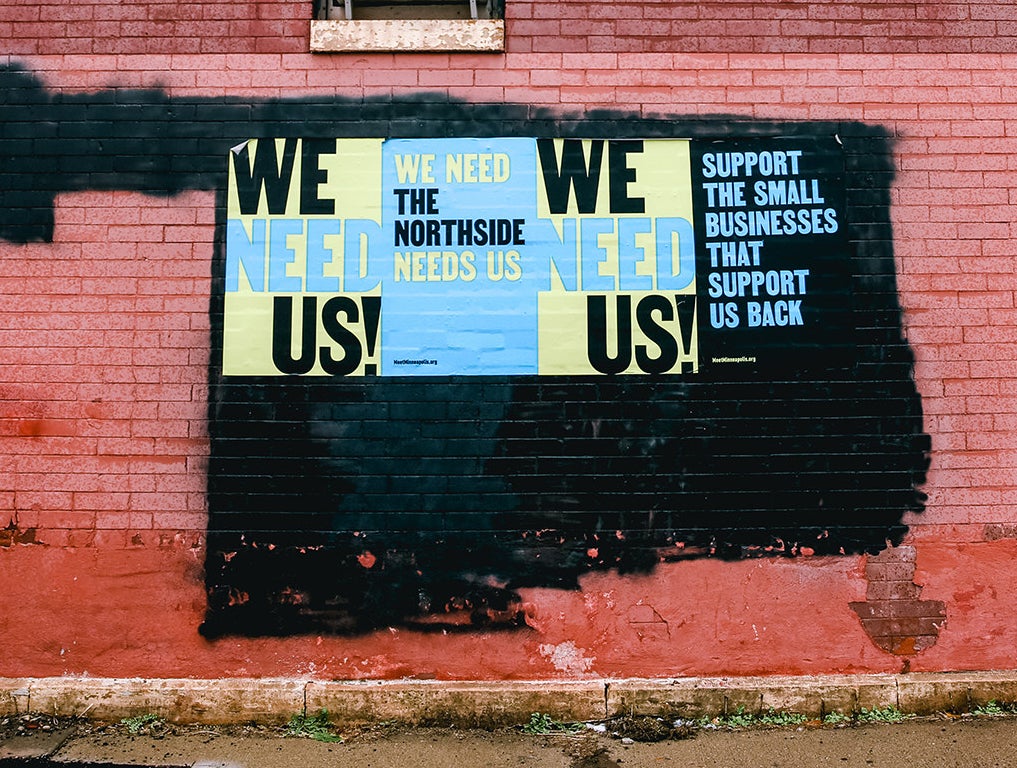
In short: The government needs to step in and help, Jackson believes.
And once again she is now witnessing the city’s north side change before her eyes. White homebuyers are flooding into the neighborhood. One of the byproducts of the ever-more-expensive exclusive white suburbs that Trump is fighting for is that even the children of those communities can’t afford a house there when they grow up. That leads many to turn to communities like North Minneapolis to get their leg up on the property ladder. Buy there, renovate, and eventually sell and move to a more exclusive community. A BuzzFeed News analysis of mortgage records shows that the majority of mortgages for the two zip codes that make up the north side have gone to white homebuyers in the last few years. Jackson said Black families like hers are increasingly being priced out of the neighborhood.
Jackson feels like she doesn’t deserve the house she owns, despite all the effort she put in. She thinks she was in the right place at the right time, and her family has reaped the benefits. Jackson has watched her own house skyrocket in value. Looking around at what houses in the neighborhood are selling for, she thinks her house could sell for $100,000 more than she paid for it. That’s exactly what she dreamed of when she brought her home five years ago — that it could turn into an asset that would give her family options. But as her house climbs in value, more and more of her clients are being locked out of accessing the same opportunities. And she just doesn’t see the will in white Minnesotans to fix the injustices ingrained in their state.
“There’s this culture of Minnesota nice,” Jackson said. “White folks will smile in your face … But they will also be stabbing you in the back like nobody’s business at the same time.”
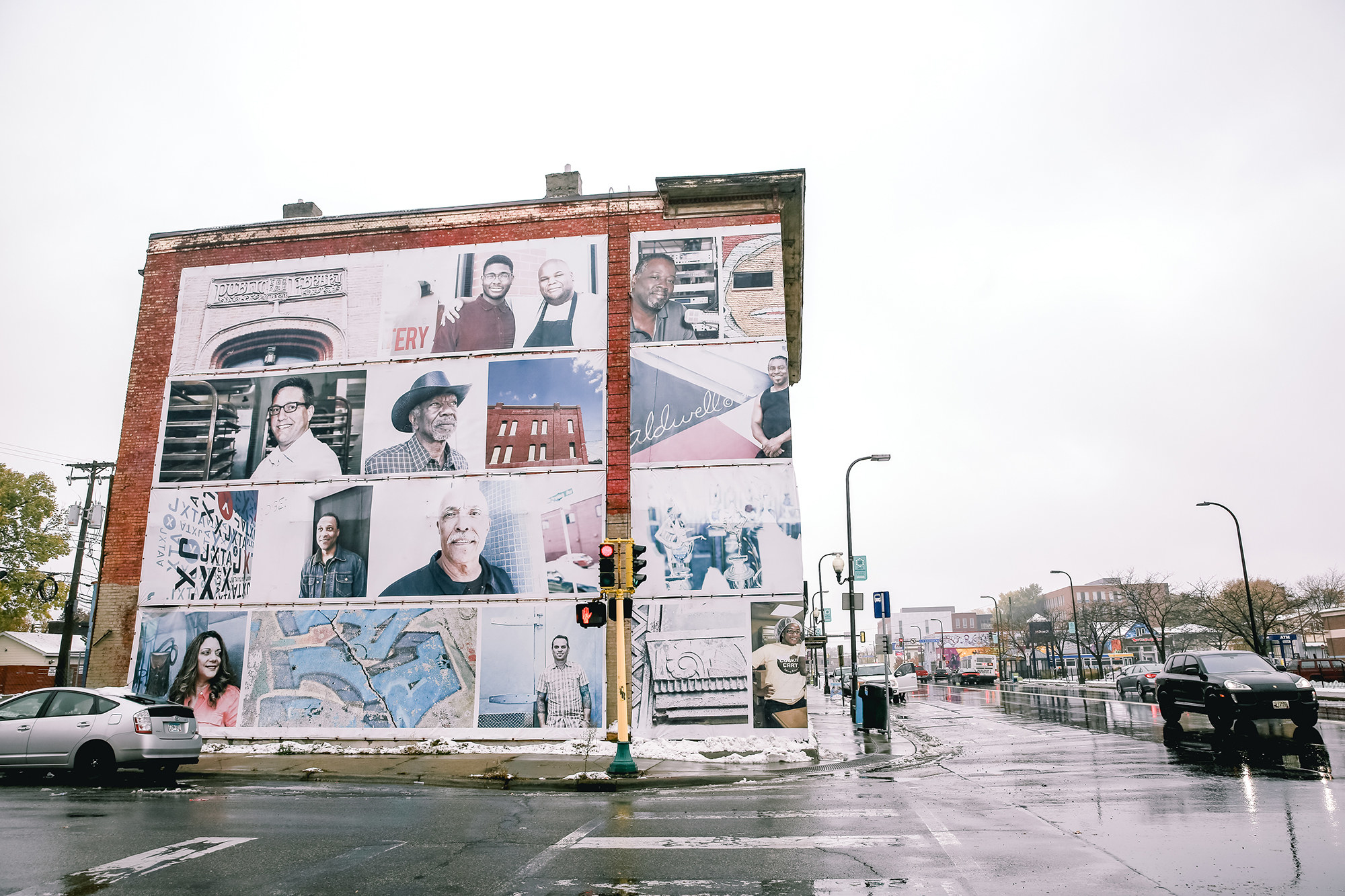
Shannon Smith Jones, a North Minneapolis native and the executive director of a local nonprofit housing developer, said that while outsiders often project dysfunction on her community, there’s nowhere else she’d rather live. She can trace her family lineage on the north side back generations. And for longtime residents like her, it’s like a small town where everyone knows each other. “I can’t go to the grocery store without running into somebody I know.”
Smith Jones watched that community activate this summer when a backlash against the George Floyd protests saw white supremacists descend on her neighborhood. City officials say they received dozens of reports of racial attacks and vandalism on the north side in the days following the Black Lives Matter demonstrations in response to Floyd’s death.
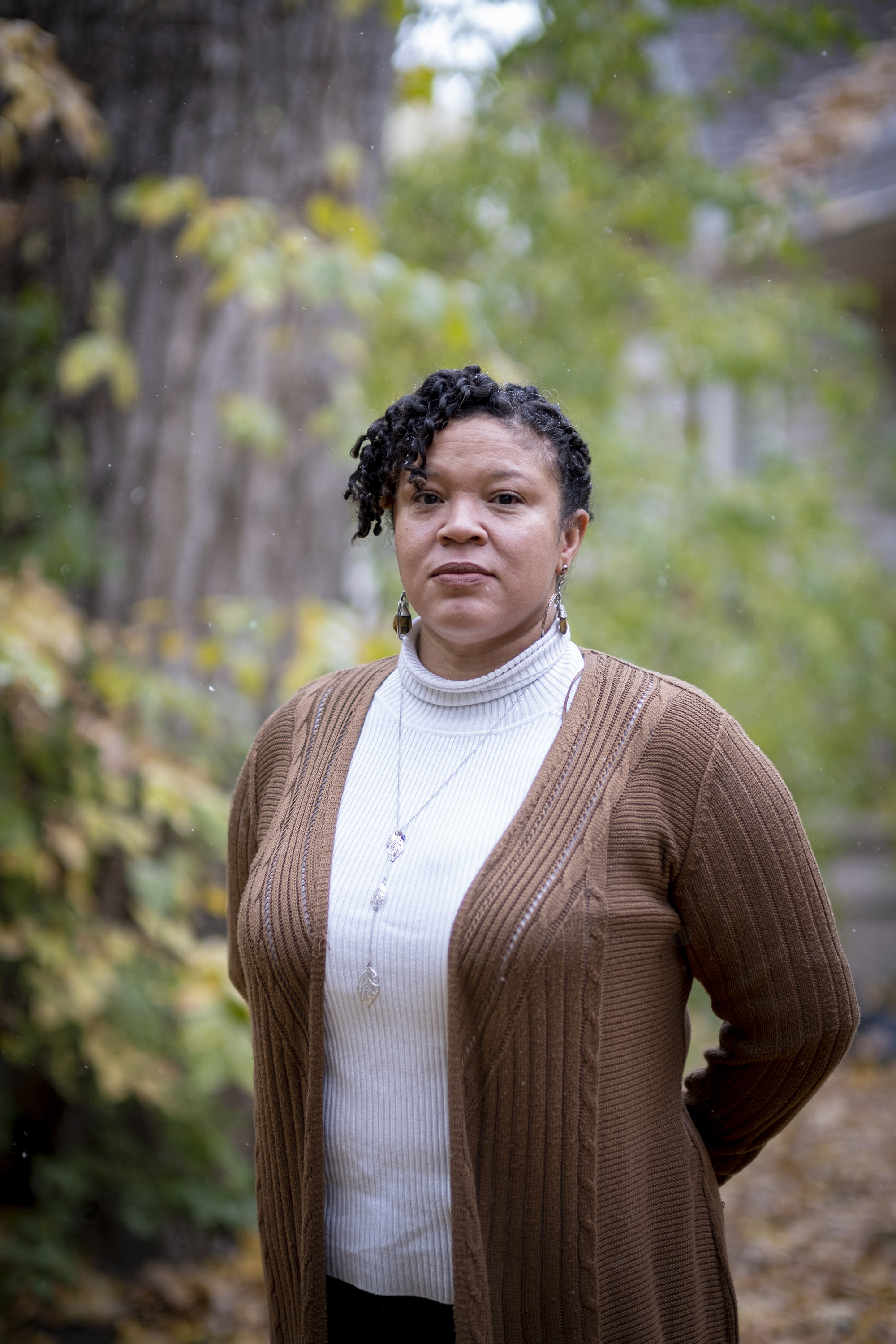
“Folks were coming to the neighborhood, and my neighbor came over, knocked on the door, and we sat outside,” Smith Jones remembered. “We were talking to each other. We were texting each other, Do you see this? What's going on? There was like this network.”
But gentrification is altering that network. Smith Jones doesn’t have a problem with the neighborhood becoming less Black — indeed it reminds her of the North Minneapolis of her childhood before white flight took hold. The problem, she said, is with the “tone and tenor” of recent gentrification that has left longtime Black residents feeling scrutinized and policed by the new arrivals. She sees posts on the Nextdoor app and on the neighborhood association page complaining about things like “two Black males walking through the alley, and I’m like, Well, what’s the problem?”
Many of her new neighbors just don’t understand basic aspects of the lives of their Black neighbors she said. Smith Jones likes to tell the story of how, when they were growing up, her sister’s boyfriend would wait until the last minute and run for the bus stop. “My mom would always say, ‘I need you to stop waiting till the last minute. I’m worried about you running to the bus stop as a Black man. I don’t want the police harassing you.’”
Smith Jones often thinks about that when she sees her new white neighbors who are free to run around the neighborhood. “So when you see people running through the neighborhood now, you’re like that’s something that didn’t feel like we could do,” she said.
“There’s a level of arrogance … It’s not even an arrogance because they just don’t know any different, but there’s a freedom in that, that wasn’t allowed or that we didn’t feel like we had,” she said.
But even with the changing face of her neighborhood, Smith Jones is adamant that she’s there to stay.
“I don’t like the suburbs,” she said. “I have found that I’m really not comfortable where there’s a lack of diversity.”
Smith Jones said she hears the same sentiment from many of her longtime neighbors, no matter how they’re portrayed in the media — it’s not a place that everyone is trying to escape.
“For north side residents who have lived here for a long time, there’s a different sense of pride. Like other communities aren’t shouting out things like ‘NFL,’ ‘north sider for life’. That’s a north side thing. You’re not getting that in the other neighborhoods in the same way.”
Smith Jones said her neighbors don’t want to live in a “fourth-ring suburb … where you don’t have someone for you to be like, ‘Hey, I’m going to be a little bit late for work. Can I send my kids to your house?’” Instead of obsessing about how to prevent her neighbors from going to the suburbs, she’d like policymakers to come up with solutions for the decades of neglect her community has faced. But she doesn’t hold out much hope that the government, with its long history of racist housing policies, will step in and do right by Black people.
Instead, Smith Jones finds herself advocating for Black self-determination.
“We need to start dreaming a different dream and start rethinking, What does it look like to do things differently? And that might just need to come from the community itself,” she said. ●
